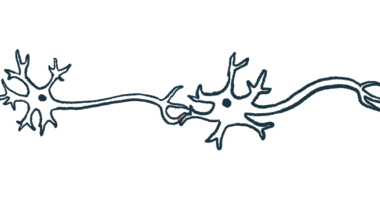New Technique, MUNIX, May Capture Motor Neuron Loss and Muscle Status in Type 3 and 4 Adults

A non-invasive electrophysiology technique called motor unit number index, or MUNIX, can effectively assess the loss of motor nerve cells and muscle impairment in adults with spinal muscular atrophy (SMA) types 3 and 4, a study in patients reports.
The study “The motor unit number index (MUNIX) profile of patients with adult spinal muscular atrophy” was published in the journal Clinical Neurophysiology. Its authors suggest MUNIX be further evaluated for its potential as a diagnostic and disease monitoring marker.
Disease progression in SMA type 3 and 4, two slowly advancing forms, is typically evaluated through clinical exams, strength measurements, and functional rating scales. But test outcomes can be influenced by the person performing the test, a phenomenon called inter-rater variability, and they may not detect subtle changes in progression.
Electrophysiological measures, such as the compound motor action potential (CMAP) and motor units number estimation (MUNE), have shown promise as biomarkers of SMA progression. Electrophysiology is the study of the electrical properties of biological cells and tissues, for example, the electrical activity of nerve cells.
Both CMAP and MUNE measures are low in children with SMA, and correlate with age and motor function.
These tests are used only in children with severe and rapidly progressive SMA forms, and their potential in adult patients is unknown.
Additionally, “MUNE is technically challenging, time-consuming and invasive, and is thought to be associated with relatively low reproducibility,” researchers wrote.
A more recent and non-invasive electrophysiology technique — called motor unit number index (MUNIX) — has shown good results in evaluating electrophysiological changes in people with amyotrophic lateral sclerosis (ALS). Several studies have shown the technique is reproducible, and capable of following motor neuron (nerve cell) loss in ALS and in diseases involving damage to the peripheral nerves (the system of motor and sensory nerves outside those of the central nervous system).
MUNIX determines the number of working motor units — whose loss is the primary reason for muscle atrophy — in a given muscle. A motor unit consists of a spinal motor nerve cell and all the muscle fibers it innervates.
Ask questions and share your knowledge of SMA in our forums.
The technique involves placing surface electrodes on an individual’s muscles and relies on a statistical approach that, when integrated with a dedicated software, arrives at a probable motor unit count. This allows researchers to estimate the number of functioning motor neurons.
Researchers used MUNIX to characterize motor unit loss in 19 SMA type 3 and 4 patients — four of whom were non-ambulant — and 16 sex- and age-matched healthy controls. All patients had begun walking as toddlers between 12 and 15 months of age.
Participants’ neuromuscular performance was evaluated using a battery of tests, specifically aimed at assessing muscle strength. The SMA functional rating scale (SMAFRS) — which measures functional disability in 10 key domains of daily living — was also used.
MUNIX was used to evaluate five muscles, all on the body’s right side, located in the hand, foot, arm, lower leg, and back.
Compared to controls, SMA patients showed significantly lower MUNIX values in all muscles tested, regardless of their degree of functional impairment.
Reduced MUNIX counts was particularly significant in two muscles in patients, with a 42.2 percent reduction in the abductor digiti minimi, a strong skeletal muscle of the hand and foot, and a 21.6 percent reduction in the abductor pollicis brevis, a muscle in the hand between the wrist and the base of the thumb.
Researchers also saw evidence of new nerve growth — a process called nerve sprouting — shown by an increase in the muscular units size index (a parameter called MUSIX). Specifically, MUSIX scores increased by 47.7 percent in the abductor digiti minimi and 20.8 percent in the abductor pollicis brevis.
The ratio between MUNIX/MUSIX correlated with muscle strength, and the MUNIX scores correlated with degrees of patients’ disability.
“[O]ur results provide evidence that MUNIX reliably captures LMN [lower motor neuron] loss and muscle involvement in SMA type III and IV,” the researchers wrote.
“Further studies with longitudinal designs are needed to confirm the full biomarker potential of MUNIX as a diagnostic and monitoring marker, and its role in future clinical trials,” they concluded.







